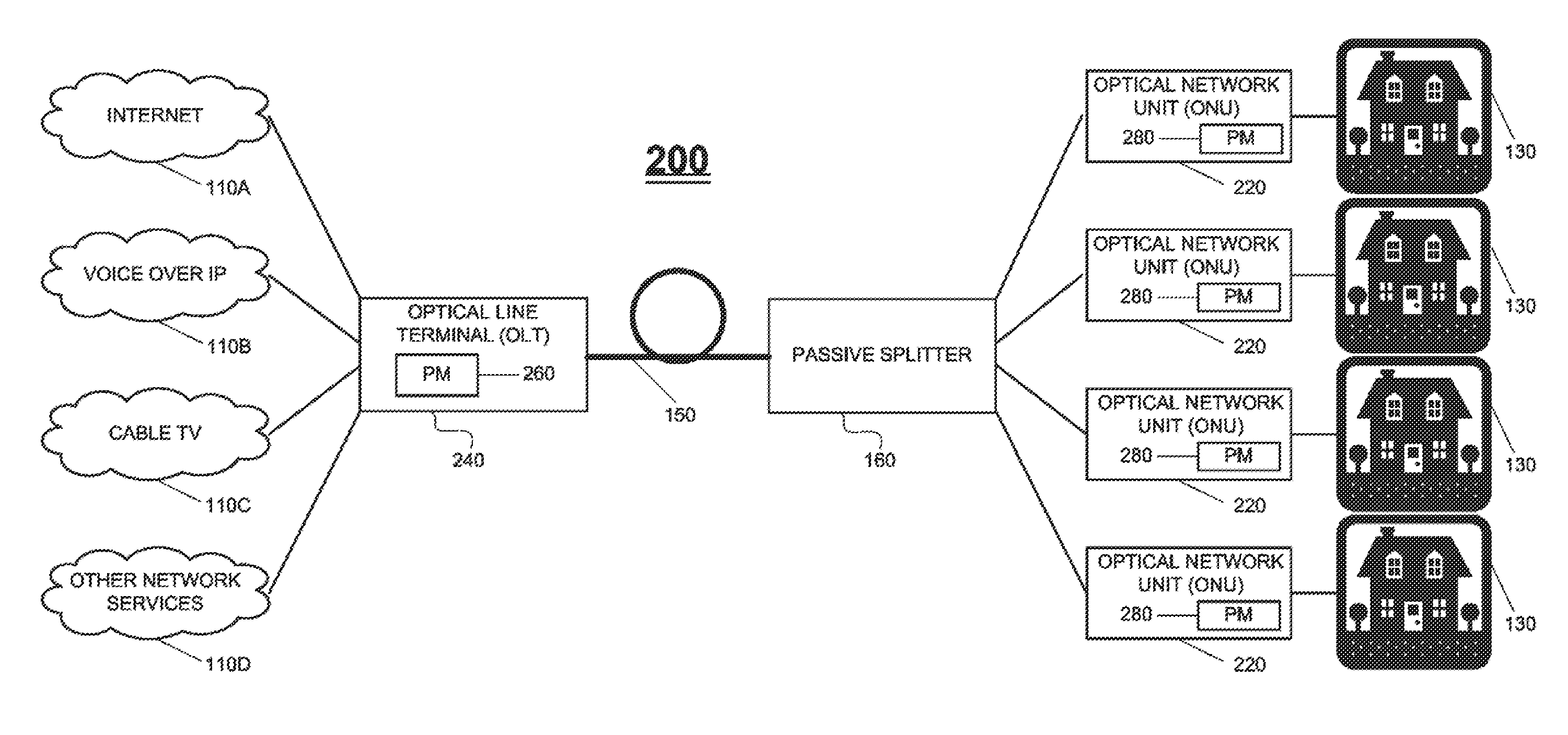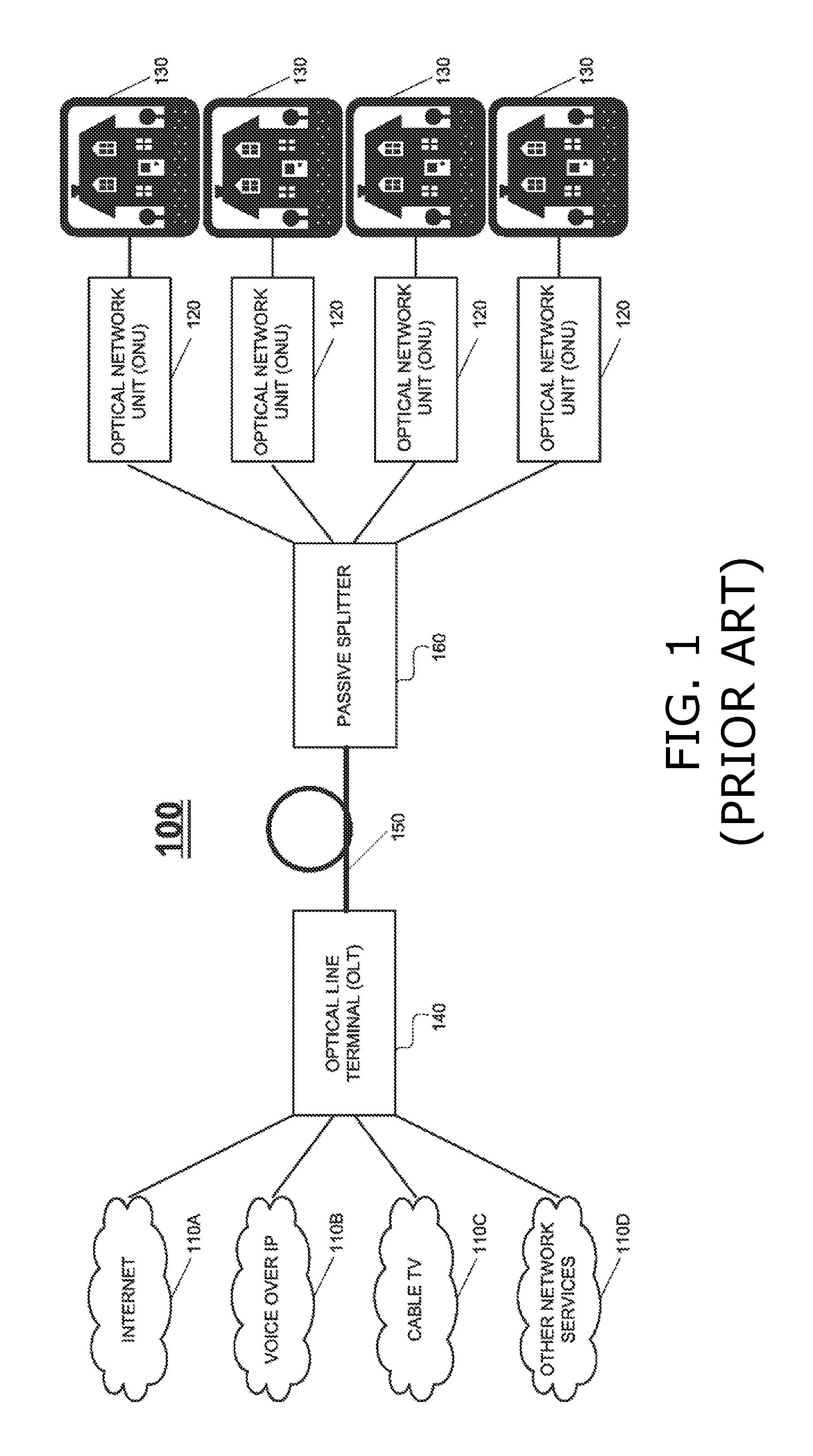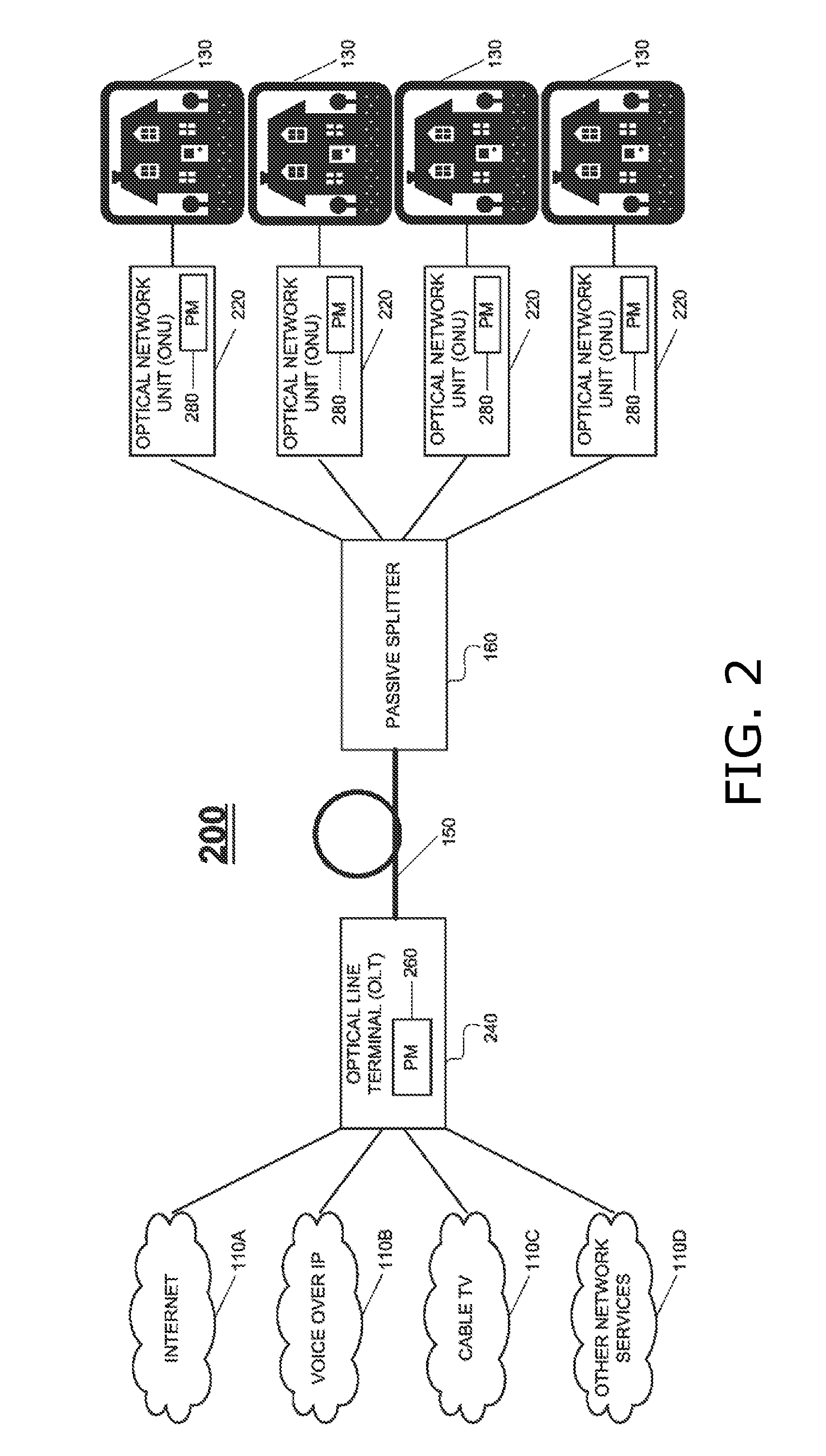Power management for passive optical networks
a technology of optical networks and power management, applied in the field of passive optical networks, can solve the problems of large increase the power consumption of pons, and achieve the effects of saving operational expenses, reducing heat dissipation, and saving energy
- Summary
- Abstract
- Description
- Claims
- Application Information
AI Technical Summary
Benefits of technology
Problems solved by technology
Method used
Image
Examples
Embodiment Construction
[0021]Aspects of the present invention relate to power management of PONs.
[0022]Reference is made to FIG. 2, which is a simplified block diagram of an enhanced PON 200, with power management in accordance with an embodiment of the present invention. PON 200 includes an OLT 240 with a novel power management (PM) module 260, and ONUs 220 with novel PM modules 280.
[0023]Each ONU PM module 280 maintains its own state machine, and OLT PM module 260 maintains separate state machines for each ONU 220. Each ONU 220 may operate in one of three possible states; namely, an “Active” state, which is its normal operational state, a “Sleep” state, which is a low-power mode, and an interim “Waking Up” state, during which ONU PM module 280 sends a report regarding its upstream buffer occupancy to OLT PM module 280, and OLT PM module 260 and ONU PM module 280 jointly decide whether ONU 220 should transition to Sleep state or to Active state. The state machines in OLT PM module 260 and ONU PM module 2...
PUM
 Login to View More
Login to View More Abstract
Description
Claims
Application Information
 Login to View More
Login to View More - R&D
- Intellectual Property
- Life Sciences
- Materials
- Tech Scout
- Unparalleled Data Quality
- Higher Quality Content
- 60% Fewer Hallucinations
Browse by: Latest US Patents, China's latest patents, Technical Efficacy Thesaurus, Application Domain, Technology Topic, Popular Technical Reports.
© 2025 PatSnap. All rights reserved.Legal|Privacy policy|Modern Slavery Act Transparency Statement|Sitemap|About US| Contact US: help@patsnap.com



